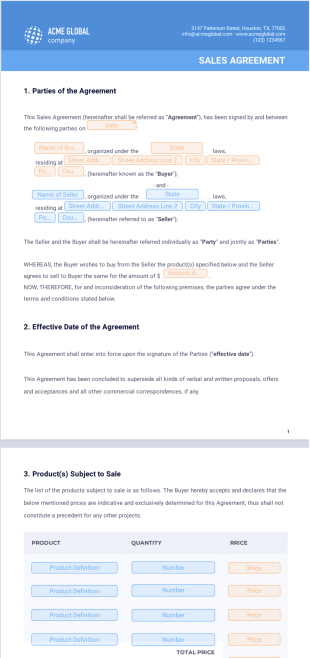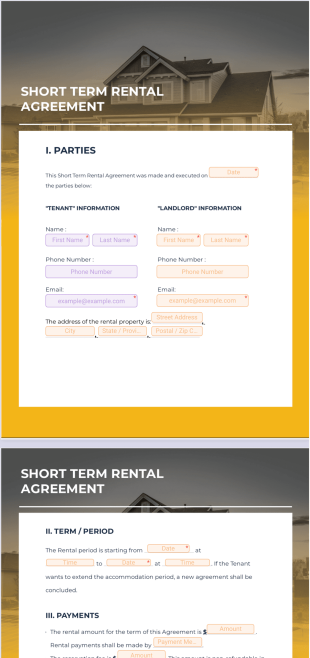Broker Carrier Agreement FAQs
1) What is a broker carrier agreement?
A broker carrier agreement is a contract between a freight broker and a carrier that has agreed to transport their cargo. These agreements cover details such as payment terms, liability, timeline, and the qualifications of both parties.
It’s common for brokers to work with multiple carriers to fulfill their shipping needs. That’s why a broker carrier agreement template is especially valuable: Once you’ve customized the template to fit your needs, you can reuse it again and again.
Brokers don’t have the time to regularly recreate agreements to fit each carrier’s unique circumstances. By using a template, brokers can simply update carrier and shipment details and avoid having to start from scratch.
2) What is the purpose of a broker carrier agreement?
Broker carrier agreements are necessary to protect the interests of both parties in case of a misunderstanding or dispute regarding payment, damaged goods, or other issues.
By signing these agreements, a broker promises to pay a carrier their stated rate, plus any additional outlined expenses. Meanwhile, a carrier promises to transport a set amount of cargo in a specified period of time. If either party breaches their end of the contract, the other party can take legal action to hold them accountable to the agreed-upon terms.
3) Why is a broker carrier agreement important?
Broker carrier agreements are important because a lot can go wrong while transporting cargo. Carriers must often meet strict deadlines and deal with unforeseen events like bad weather. However, brokers must meet their clients’ expectations and face the outcomes of any potential damage or delays.
Signing a broker carrier agreement ensures both parties will uphold their responsibilities to create a mutually beneficial outcome. If carriers perform their duties as outlined, brokers will compensate them accordingly. However, it’s important to understand who’s responsible if a problem arises.
4) What are the key components of a broker carrier agreement?
Your broker carrier agreement’s exact terms and conditions will vary depending on the size, timeline, and details of your shipment. However, there are some key components you should include to protect your business from potential misunderstandings. These include
- Agreement date
- Involved parties
- Broker information
- Carrier information
- Billing and payments
- Broker responsibilities
- Carrier responsibilities
- Indemnification clause
- Termination and separability clauses
- Non-exclusivity clause
- Non-waiver clause
- Dispute resolution
- Signatures and dates
Including these crucial elements in your contract will make the terms clear for both parties.
5) What are the use cases of broker carrier agreements?
The main use case for a broker carrier agreement is transporting shipments of cargo for freight brokers. However, this use case has many different sub-uses relevant to brokers and carriers alike. A broker carrier agreement can cover
- Loading and unloading cargo
- Performing specialized delivery services
- Hiring out carrier subcontractors
- Negotiating rates and expenses
- How disputes will be resolved
- Liability for damaged shipments
While using a broker carrier agreement may seem straightforward, it’s crucial to pin down the details, particularly as the value of your shipments increases. A detailed agreement ensures that both parties understand their responsibilities.
6) How do I create a broker carrier agreement?
A broker carrier agreement is a vital part of any shipment operation. That’s why many brokers choose to create these agreements themselves. But creating contracts from scratch can be a hassle. Luckily, Jotform offers templates like this one to help you get started quickly.
Get started quickly by using this purchase agreement template. Just click Use Template and then customize it to your needs by editing the text, adding fields, and changing the design however you see fit. When you’re ready to share the contract, just click the Send tab to email it directly from the Jotform platform.
Using a template saves you time in designing, structuring, and organizing your agreement, so you can get right to adding the specific details you need to include.
You may have hundreds of carriers who need separate agreements. That’s why Jotform’s broker carrier agreement template is so helpful — it lets you skip the creation process and build signable documents quickly to send out as many times as you need.
7) How do I customize a broker carrier agreement template?
While using a template speeds up the signing process, you still need to be sure it matches your brand. Using Jotform’s Sign Builder, you can easily update the visuals and body copy of our broker carrier template to suit your needs. Simply click Use Template and then use the Sign Builder to make it your own.
Jotform even lets you update your old templates to fit new branding and clients. Upload your existing template to Jotform Sign to change your background and logo and even add e-signature fields to make signing easy.






